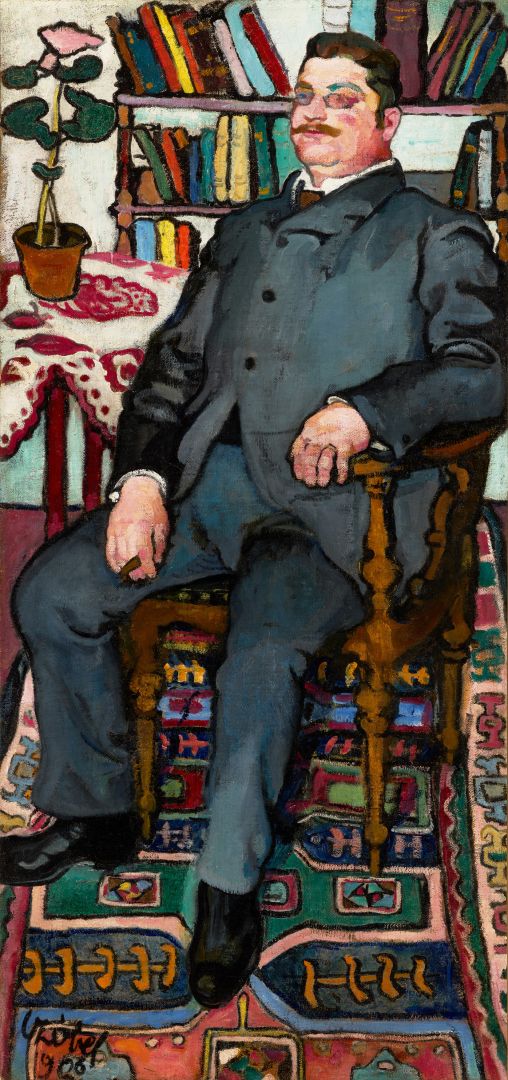Hungarian Fauvists - 2. view
Sitting Man
CZÓBEL Béla
Budapest, 1883 – Budapest, 1976
Sitting Man, 1906
Having previously worked in Nagybánya (Baia Mare), Béla Czóbel featured in the 1905 Salon d’Automne show in Paris, where the Fauvists, led by Henri Matisse, also exhibited their works. In the summer of 1906, back in the artists’ colony, he presented the colourful compositions he had crafted out of large patches of pigment, which set an inspirational example for the young painters known as the “Neos”. One of the paintings he submitted to the next Salon d’Automne in Paris was this work, Sitting Man, depicting his brotherin-law. Although he painted quite a number of garden scenes at the time (such as Peintres á la campagne, Mus.e National d’Art Moderne, Centre Pompidou, Paris), he occupied himself with the problem of full- or half-length portraits of people in enclosed spaces. Grounded in the traditions of Nagybánya and the example of Rippl-Rónai, Czóbel’s art incorporated the lessons of Van Gogh, Gauguin and Matisse, and grew increasingly bolder, more colourful and more individual.
The pattern of the carpet, the still-life details of the background, and the changing perspective all show how the “fauvist” attitude towards handling colour and the decorative approach were synthesised in Czóbel’s painting.
